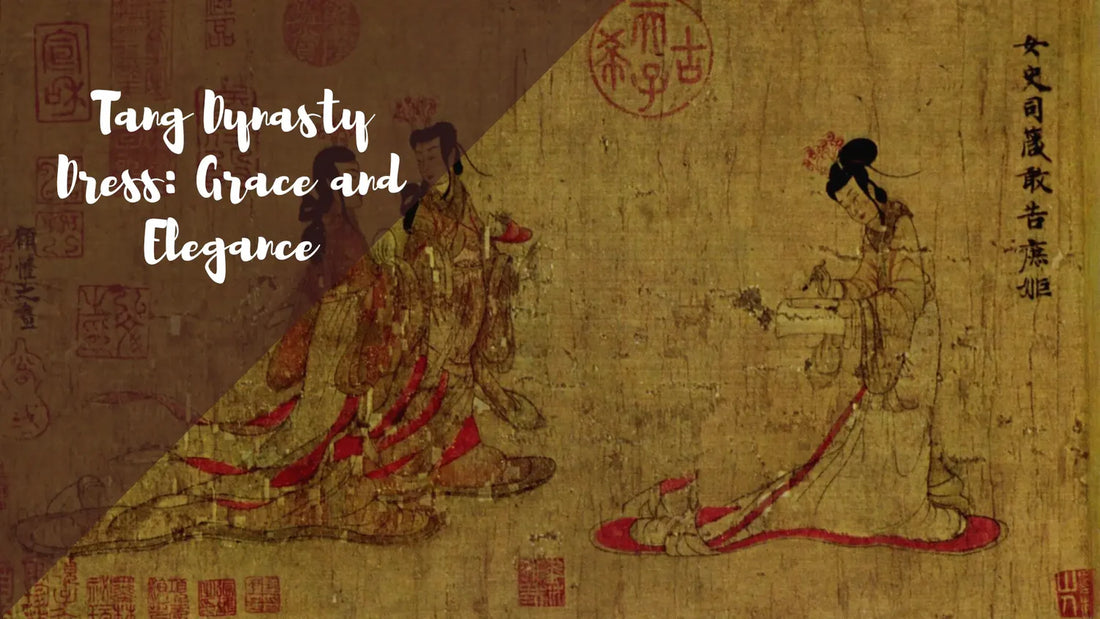Tang Dynasty Era
The Tang Dynasty (618-907 AD) was a time of great cultural and artistic achievements in ancient China, and this is particularly evident in the clothing styles of the period. Tang Dynasty dress is noted for its grace and elegance, with flowing lines and intricate details that reflect the sophistication and refinement of the era.
During the Tang Dynasty, social status was reflected in clothing choices, with formal attire reserved for the upper classes. Women's clothing typically featured long, flowing robes with wide sleeves, while men's clothing was characterized by short robes or jackets worn over long pants or skirts.
Xue (靴), Lü (履) and Quekua (缺胯)
During ancient times in China, shoes were an essential part of everyday clothing, and they were worn to match the occasion and social status of the wearer. The footwear worn during this period included lü, which were regular shoes worn for formal occasions, and ji, high wooden clogs worn for informal wear. Additionally, shoes with curled upward tips were also popular, and they would later become a widespread fashion during the Tang dynasty.
Innovative styles of footwear emerged during this period due to the influence of northern nomads in China. The northern nomads introduced leather boots called xue, quekua, which were an open-collared robe with tight sleeves that couldn't cover the undershirt, and a hood and cape ensemble. These items were commonly included in inventories found in tombs from this period.
Men's clothing styles of this period included robes, shanku, and xiku, which are jackets with trousers. Meanwhile, women typically wore the ruqun, which was a lined jacket with a long skirt, and shanqun, a shirt with a long skirt. Tomb inventories indicate that there were several types of clothing styles during this period, including square garments called fangyi, shirts called shan, and various kinds of vests, jackets, and trousers.
During this time, black gauze hats with a flat top and an ear at either side appeared. They became increasingly popular among both men and women and were worn as a stylish accessory to complete an outfit. The style of wearing hats during this period became a part of the fashion of daily life in China.
In conclusion, the footwear and clothing styles during this period in China were reflective of social and cultural norms, and they evolved over time to reflect the changing tastes and trends of that era. Today, these styles continue to influence fashion and are remembered for their unique design and distinctive appearance.
Distinctive Features of Tang Dynasty
One of the most distinctive features of Tang Dynasty dress was the use of bright, vivid colors and bold patterns, often featuring intricate embroidery and intricate designs. These designs incorporated a wide variety of motifs, including dragons, phoenixes, flowers, and mythical creatures. Silk was the primary material used for clothing, and the luxurious fabric was often embellished with gold and silver thread or beads.
Another notable aspect of Tang Dynasty dress was the attention paid to accessories. Women's hairstyles were often elaborate, with complex arrangements of flowers, jewels, and hairpins. Jewelry was also an important part of the ensemble, with necklaces, bracelets, and earrings made from precious metals and gemstones.
Despite the ornate nature of Tang Dynasty dress, comfort and practicality were still important considerations. Clothing was designed to allow for ease of movement, with loose-fitting garments and layers that could be easily adjusted for comfort.
Today, Tang Dynasty dress remains a symbol of China's rich cultural heritage and a source of inspiration for modern fashion designers. Its enduring legacy speaks to the enduring appeal of its grace and elegance, and its ability to capture the spirit of an era long past.

